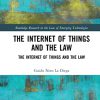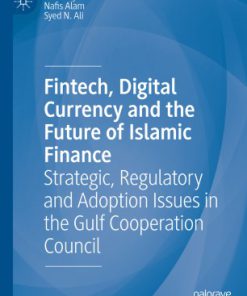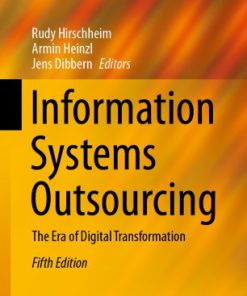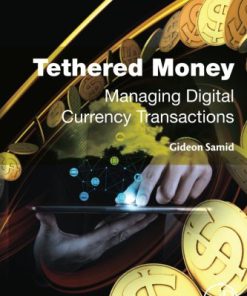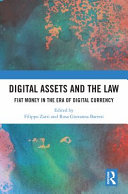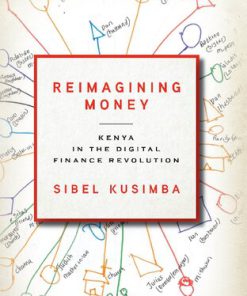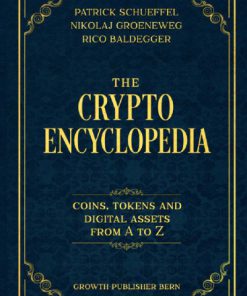Digital Assets and the Law Fiat Money in the Era of Digital Currency 1st Edition by Filippo Zatti, Rosa Giovanna Barresi 1003853329 9781003853329
$50.00 Original price was: $50.00.$25.00Current price is: $25.00.
Digital Assets and the Law Fiat Money in the Era of Digital Currency 1st Edition by Filippo Zatti, Rosa Giovanna Barresi – Ebook PDF Instant Download/DeliveryISBN: 1003853329, 9781003853329
Full download Digital Assets and the Law Fiat Money in the Era of Digital Currency 1st Edition after payment.
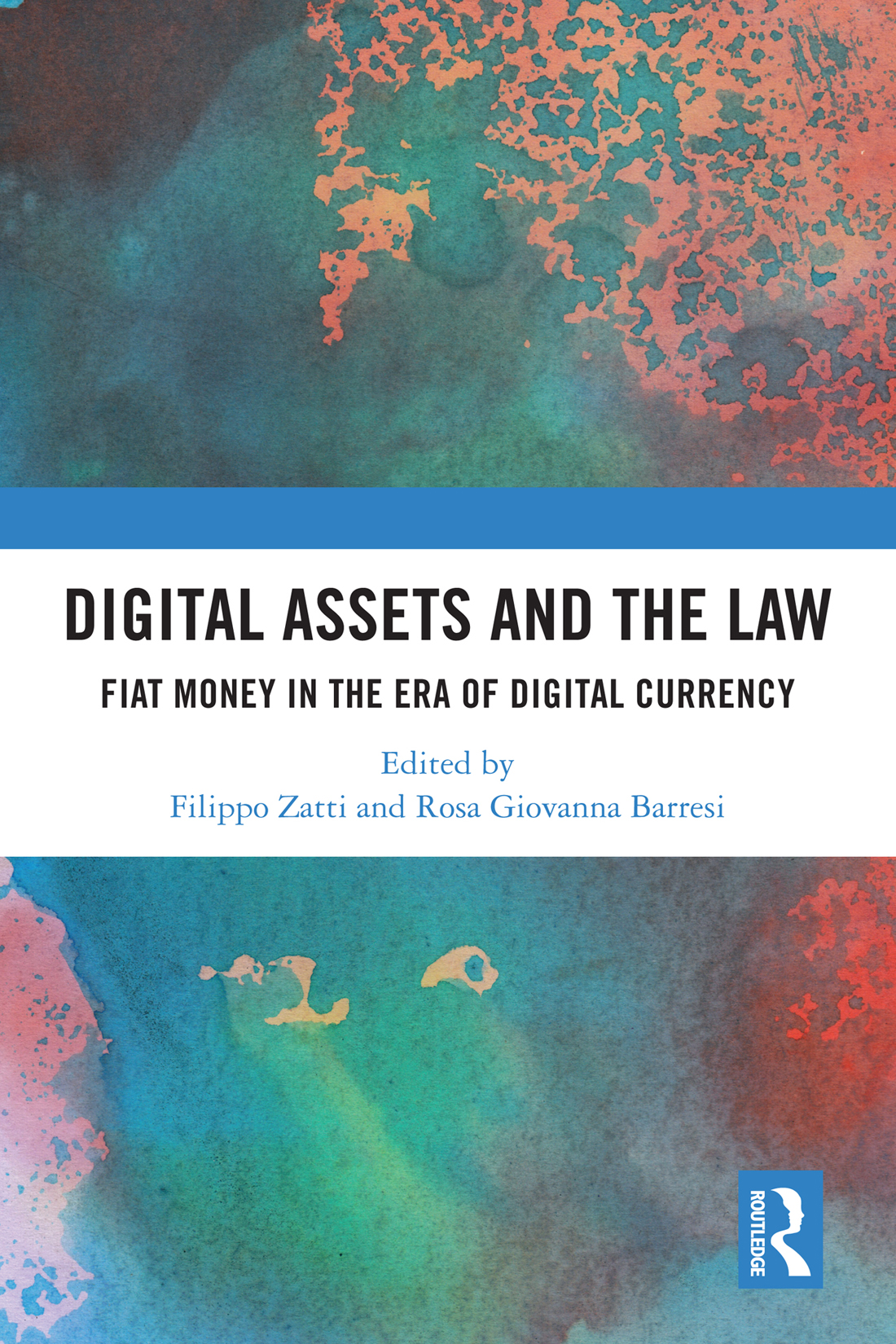
Product details:
ISBN-10 : 1003853329
ISBN-13 : 9781003853329
Author: Filippo Zatti, Rosa Giovanna Barresi
This book delves into the intricacies of digital assets. With the increasing reliance on crypto and the potential adoption of digital currencies by central banks, our monetary system is at a critical point. The importance of taking the next step has become even more stringent, as evidenced by this systematic scientific reconstruction. Divided into five concentric parts, the book starts with a historical, technical and financial introduction to digital assets. It then explores the changing role of central banking and monetary economics in the upcoming era. Finally, it focuses on the broad legal issues arising from the new digital landscape, not shying away from exploring forward-thinking solutions and policies for the future. With the contributions of prominent international experts in the field, this collection supplies a transdisciplinary analysis based on the belief that complex phenomena can only be handled by complex solutions. This groundbreaking work aims to be more than just an academic treatise; it is a must-read for students, scholars, financial professionals, and all those who want to understand the emerging digital currency reality that many have yet to fully recognise.
Digital Assets and the Law Fiat Money in the Era of Digital Currency 1st table of contents:
PART I Overview
1 A History of Central Bank Digital Currency and the Money Monopoly
1.1 CBDCs defined
1.2 The evolution of CBDCs
1.3 The money monopoly
1.4 Conclusion: The money monopoly and CBDC
2 The Technological Factor in the Conception of Central Bank Digital Currencies
2.1 Introduction
2.2 Technological choices
2.3 Cash versus CBDC
2.4 CBDC opportunities
2.5 Conclusions
PART II Central Banking and Monetary Economics in the Digital Currency Era
3 Monetary Sovereignty in the Digital Currency Era
3.1 Introduction
3.2 Notions
3.3 Government and money
3.4 Risks to monetary sovereignty
3.5 Policy recommendations
3.6 Conclusion
4 Central Bank Digital Currencies: A New Nexus Between Central and Commercial Banks?
4.1 CBDCs, a game changer for the relationship between central and commercial banks?
4.2 The Bahamas sand dollar or the challenges of introducing a general, domestic, two-tier, permission-based CBDC
4.3 The design choices of CBDCs are a crucial determinant of the potential impact on the banking architecture
4.4 Conclusion
5 Unlocking the Potential of Central Bank Digital Currencies in Developing Countries
5.1 Introduction
5.2 Financial exclusion vs financial inclusion: Existing trends of innovative financial services in developing countries
5.3 The transformative potential of technology in promoting financial inclusion: From mobile money to CBDC
5.4 CBDC’s promise of accelerating financial inclusion: Capitalising on existing infrastructure to adopt, distribute, and scale CBDC
5.5 Promoting financial inclusion in a CBDC economy: A digital currency ecosystem as the primer
5.6 Looking ahead: Additional macroeconomic challenges for developing countries hindering CBDC’s success
6 A Universal Stablecoin to Rule Them All?
6.1 Foreword
6.2 The risks posed by the euro area monetary system and its regulatory framework
6.3 A multi-currency stablecoin issuance
6.4 A single-currency, e-money issuance
6.5 What comes next? Improving the regulatory framework
6.6 Conclusion
PART III The Central Bank Digital Currencies in the Mirror
7 Implications of the Digital Euro for Monetary Policy Transmission Outside the Euro Area
7.1 Motivation
7.2 Overview of digital euro designs
7.3 Monetary policy implications
7.4 Cross-border payments
7.5 Euroisation: Point of concern or an opportunity?
7.6 Conclusion and policy discussion
8 Digital Euro: Issued by Commercial Banks, Digitally Transforming the Industry
8.1 Motivation
8.2 Forms of the digital euro
8.3 Digital euro issued by commercial banks
8.4 Digital transformation driven by the digital euro
8.5 Outlook and conclusion
9 How To Design a Private and Compliant Central Bank Digital Currency?
9.1 The CBDC landscape
9.2 Why privacy matters for CBDC
9.3 Privacy and compliance
9.4 A detailed proposal
9.5 Conclusion
10 Beyond Central Bank Digital Currencies: Lessons from Japan’s experience
10.1 Introduction
10.2 Overview of Japan’s payment, clearing, and settlement
10.3 Recent initiatives for next-generation FMIs
10.4 Medium- to long-term strategy for next-generation FMIs
10.5 Conclusion
PART IV Digital Currencies, Cryptocurrencies, and Stablecoins: Fiat Money and Legal Tender
11 The Applicable Laws to Cross-Border Payments in Central Bank Digital Currencies: The Late Lex Monetae or Long Live the Lex Monetae?
11.1 Premise
11.2 The concept and scope of the lex monetae
11.3 The interaction between the lex monetae and other laws applicable to a cross-border payment
11.4 The resurgence of the lex monetae within CBDCs: A new digital lex monetae?
12 ‘Legal tender’ and Central Bank Digital Currency
12.1 Changes in legal tender
12.2 The role of digital currency in shaping a new banking and payment system
12.3 The legal dimension of digital monies issued (or not) by a central bank
12.4 Some final considerations
13 A European Central Bank Digital Currency under German Law
13.1 Status quo
13.2 The legal nature of CBDC under German law
13.3 Legal regulation of CBDC under German law
13.4 Future questions
13.5 Conclusion
14 The Digital Loonie: The Legal Framework for a Central Bank Digital Currency in Canada and Beyond
14.1 Introduction
14.2 Background: The loonie through the years
14.3 Implementing the digital loonie
14.4 The potential risk of non-digitisation
14.5 Considerations for a digital loonie
14.6 Conclusions
15 The Evolution of the Finality of Payment or ‘How RTGSs, Instant Payment Systems, and DLT Platforms Change the Concept of Money’
15.1 The concept of finality and its historical evolution
15.2 The principle of settlement finality
15.3 Frameworks and legislations about digital assets
15.4 The extension of the doctrine of finality to digital assets
15.5 Law in the making: Digital assets
15.6 A temporary conclusion
16 Central Bank Digital Currencies and the European Framework for Payments: Friends or Foes?
16.1 Introduction
16.2 A primer on digital euro design choices
16.3 The digital euro and payments: Trade-offs and policy choices
16.4 The digital euro and the European regulatory framework for payments
16.5 The digital euro and payments oversight function
16.6 Conclusions
17 The Digital Euro, Stablecoins, and the Banking Sector
17.1 Introduction
17.2 The digital euro: Why now?
17.3 The digital euro and risks for the banking system
17.4 Stablecoins, MiCA, and the banking sector
17.5 Conclusion
PART V Towards the Uncharted Times of the Digital Assets Era
18 Decentralised Finance and Capital Markets Regulation
18.1 Decentralised finance, capital markets regulation, and CBDC: The aim of this chapter
18.2 Benefits and risks of DeFi and different levels of decentralisation
18.3 ‘Decentralised DLT’ systems: Their multi-layered structure and governance implications
18.4 DLT networks and EU capital markets regulation: Existing laws
18.5 The EU regulation of decentralised DLT systems
18.6 Decentralised networks: A new type of business organisation deserving new rules?
18.7 Conclusions: Decentralisation, regulation, and insights for CBDCs
19 Central Bank Digital Currencies: What Future for Banks and Other Financial Intermediaries?
19.1 Introduction
19.2 A memo on how central and commercial banks create money
19.3 The CBDC and the new monetary theories
19.4 Direct, indirect, or hybrid CBDC
19.5 Remuneration and limit holdings of CBDCs
19.6 Some CBDC projects around the world
19.7 Some final remarks
20 Beyond Digital Assets: What is Next for Money and Payments?
20.1 Introduction: Fiat, legal tender, official currency, what else?
20.2 Sovereignty and seigniorage in the digital currency era
20.3 Interoperability, sovereignty, and finality
20.4 Emission rights as digital assets
20.5 The digital euro and payment privacy
20.6 Some final ‘tips’
People also search for Digital Assets and the Law Fiat Money in the Era of Digital Currency 1st:
difference between paper money and fiat money
what is legal tender and fiat money
why is digital money classified as fiat money
digital assets law
digital financial assets law california
Tags: Digital Assets, the Law, Fiat Money, the Era, Digital Currency, Filippo Zatti, Rosa Giovanna Barresi
You may also like…
Business & Economics - Personal Finance
Business & Economics
Open Source Agriculture Grassroots Technology in the Digital Era Chris Giotitsas
Business & Economics
The Palgrave Handbook of Corporate Sustainability in the Digital Era Seung Ho Park
Business & Economics - Management & Leadership
Information Systems Outsourcing The Era of Digital Transformation Rudy Hirschheim
Business & Economics
Tethered money managing digital currency transactions 1st Edition Samid
Business & Economics - Mathematical Economics
Reimagining Money Kenya in the Digital Finance Revolution Sibel Kusimba
Business & Economics
The Crypto Encyclopedia Coins Tokens And Digital Assets From A To Z 1st Edition Schueffel
Business & Economics - Professional Finance



